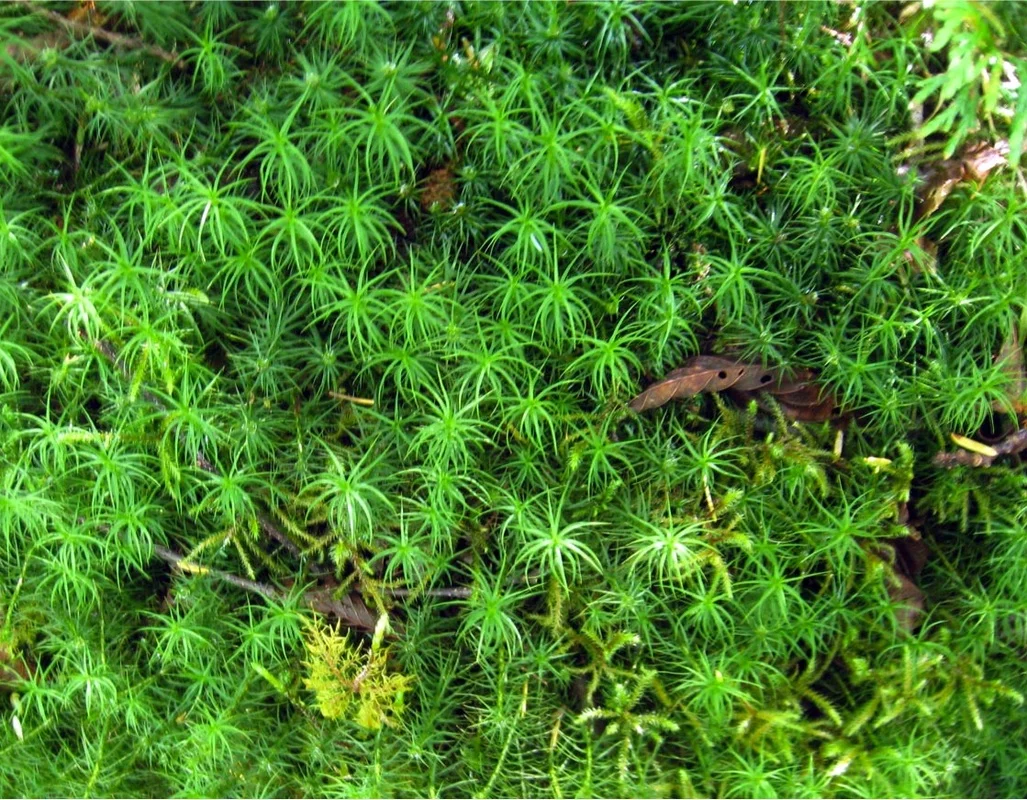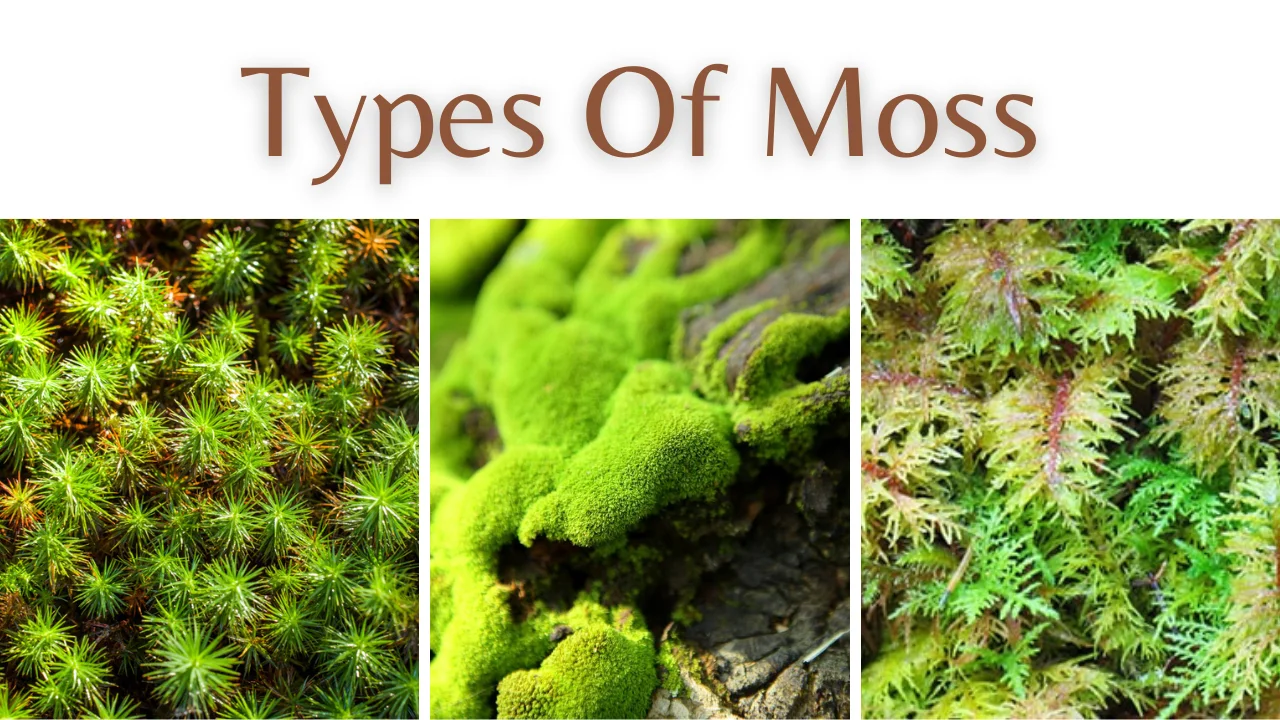Types of moss encompass diverse varieties of non-vascular plants found globally. Examples include Pincushion Moss, Common Hair cap Moss, Heath Star Moss, and Shiny Seductive Moss, each with distinctive traits and ecological roles.
Mosses, often overlooked, offer a captivating glimpse into the plant kingdom. As members of the Bryophyte division, these small non-vascular plants thrive in diverse ecosystems worldwide. From lush forests to arid deserts, mosses adapt and flourish, contributing to their surroundings.
Explore this diverse group, including the charming Pincushion Moss with its cushion-like structures in moist forests and the celestial Common Hair cap Moss, which resembles tiny stars from above. Meet the wanderer, Heath Star Moss, originally from South America, and the sun-loving survivor, Shiny Seductive Moss.
Different Types of Moss
Following are different Types of moss:
1: Pincushion Moss

Source Pinterest
Pincushion Moss is a unique moss in the Polytrichaceae family. It’s commonly found in moist forested areas where it improves soil health and maintains moisture. This moss is a perennial, and it can grow up to five inches tall and spread as wide as two feet, forming impressive dome-shaped mounds.
Each ‘cushion’ is a cluster of stems covered in lance-shaped, greyish-green leaves, giving the moss a fluffy and silky appearance. It reproduces in the fall and winter by dispersing spores into the air, which can travel great distances.
Pincushion moss is exceptionally adaptable, as evidenced by its ability to thrive in arid environments. As a result, regardless of whether it is found in a moist or dry forest, this moss improves its environment under its presence’s attractiveness and utility.
2: Common Hair Cap Moss

Source Pinterest
Common hair cap Moss is easily recognizable with its long, spiky leaves that create a captivating pattern resembling a constellation of tiny stars when viewed from above. These leaves showcase a striking range of light to brilliant green hues, contrasting beautifully with the moss’s reddish-brown stems.
This moss is widespread since it may flourish in various soils and habitats throughout the Western Hemisphere. Because of both its unique look and its extraordinary adaptability, it stands out as a noteworthy component of our natural world.
3: Mood Moss

Source Pinterest
Mood Moss, also known as broom-fork moss, is a North American native that forms delightful cushion-like mounds.
These moss clusters can reach heights of up to five inches and feature tall, slender stems adorned with spearhead-shaped leaves that seem to stretch towards the sky.
The mesmerizing presence of this one-of-a-kind moss may often be seen covering tree trunks, boulders, and logs in damp woodland habitats, where it flourishes. However, it avoids being in settings where it is always damp and where there is direct sunshine.
4: American Tree Moss

Source Pinterest
American Tree Moss, native to North America, thrives abundantly across the eastern United States and eastern Canada. Its growth pattern resembles many miniature Christmas trees packed together, creating a captivating spectacle.
The primary stems of this moss boast a rich brown hue, while the subsidiary stems take on a striking red color. As the leaves mature, they transition from a lighter shade of green to a serene olive tone.
American Tree Moss grows in many places, such as woods, nature walks, rocky areas, riverbanks, and streams. It adds a bit of natural beauty to these scenes and is a unique and interesting part of North American plant life.
5: Spoon Leaved Moss

Source Pinterest
Spoon-leaved moss is a remarkable variety that forms a lush, cushion carpet, providing a soft embrace for the surrounding vegetation.
While the moss stems can grow up to an inch and a half in length, all remain concealed beneath a dense layer of leaves, creating an appearance reminiscent of a multitude of plump caterpillars.
The leaves are small and tightly packed, with older ones displaying a rich brown hue, while the newer growth boasts a vibrant, brilliant green color.
Although it’s considered a common moss species in the United States, Leaved Moss holds a special status in Canada, where it is classified as a rare species, limited to Ontario.
6: Springy Turf Moss

Source Pinterest
Springy Turf Moss, also charmingly known as the ‘electrified cat’s tail,’ is a highly adaptable moss that thrives in diverse environments, including meadows and lawns. Its versatility makes it a common sight in various settings.
The individual stems of this moss may reach a maximum length of around five inches and are covered with minute, light green leaves that seem like they are made of thick hair.
These leaves are arranged to face the opposite direction as the unique red stalks, producing an arresting image that suggests an electric cat’s tail.
7: Heath Star Moss

Source Pinterest
Heath Star Moss, originally from South America, has journeyed far and wide, making appearances in different parts of the world, including the United Kingdom, since its introduction in 1941. This moss is a versatile traveler.
You’ll often find it thriving on decaying wood like old fence posts and logs. Surprisingly, it can also be home on shingle and thatched roofs.
However, here’s the twist: Heath Star Moss is no wallflower. It tends to have an aggressive growth pattern and can even become invasive in the right conditions.
Its adaptability across various settings is intriguing, yet it comes with a word of caution, reminding us of the ever-changing nature of the plant world.
8: Shiny Seductive Moss

Source Pinterest
Shiny Seductive Moss, a type of feather moss, is a speedy grower that can quickly spread laterally. It’s commonly found in North America, particularly thriving in the natural habitat of decaying wood, including fallen trees, old logs, and fence posts, among other substrates.
This moss is a wonderful option for creating a compelling foundation in a rock garden by filling empty areas between plants and spaces between plants. Its preference for direct sunshine is what sets it distinct from most other moss species, and this inclination makes it stand out as unique.
9: Baby Tooth Moss

Source Pinterest
Baby Tooth Moss is a perennial moss with a relatively short lifespan, widely distributed across North America, Asia, and Africa. It is possible to recognize it very fast and easily due to its distinctive characteristics, which make it stand out from other similar things.
This particular variety of moss is distinguished by the presence of tall stalks that extend gracefully over the understory plants.
These stalks are the offspring of viable shoots and will ultimately give birth to spore capsules at some point in the future. These capsules put on a visually intriguing display as they bob up and down gently on stalks that are thin and orange-brown in hue.
The real moss has foliage that is a medium green hue and has edges that are severely serrated, which gives it a distinctive aspect. Additionally, the moss itself has a very distinct texture.
On the other hand, it must be kept in a shady, damp location to flourish, as it cannot tolerate high temperatures or direct sunshine.
10. Plume Moss

Source Pinterest
Plume Moss, also known as ostrich-plume feather moss or knight’s plume moss, is a moss variety that thrives abundantly in Northern Europe and Canada. Its common names provide a vivid image of its aesthetic appeal.
The moss’s feathery foliage exhibits a pleasing medium green hue and a spreading growth pattern, forming thick mats blanketing extensive forest floors.
It creates a lush and captivating landscape as if knights’ plumes had been scattered. The feathery texture of Plume Moss adds to its charm, making it a standout feature of these forest environments.

